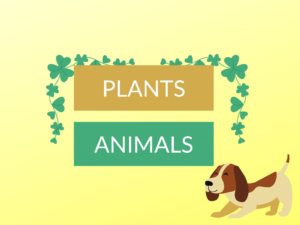Difference Between Venom and Poison
Introduction
Venom and poison are terms that are often used interchangeably, but they actually have distinct meanings. Understanding the differences between venom and poison is important, as it helps us accurately describe and categorize harmful substances found in nature. In this article, we will explore the definitions, examples, uses, and key differences between venom and poison.
What is Venom?
Venom is a specialized substance produced by certain animals, typically injected into another organism through a bite, sting, or similar mechanism. It is used for defensive purposes or as a means to immobilize prey. Venomous animals have evolved specialized structures, such as fangs, stingers, or spines, to deliver venom.
Examples of Venom
Some common examples of venomous animals include:
- Snakes (e.g., rattlesnakes, cobras, vipers)
- Spiders (e.g., black widow, brown recluse)
- Scorpions
- Jellyfish
- Cone snails
Uses of Venom
Venom has various purposes for the organisms that produce it:
- Defending against predators
- Subduing and immobilizing prey
What is Poison?
Poison refers to substances that are toxic or harmful when ingested, inhaled, or absorbed by an organism. Unlike venom, poison does not require direct injection through a specialized delivery mechanism. It can be encountered in various forms, including plants, chemicals, and certain animals.
Examples of Poison
Examples of poisonous substances include:
- Some plants, such as poison ivy and deadly nightshade
- Certain mushrooms
- Toxic chemicals, like pesticides or heavy metals
Uses of Poison
While venom is used primarily for defense or prey capture, poison serves different purposes:
- Deterring predators from consuming potential prey
- Acting as a defense mechanism for plants
- Used by humans for various applications, like warfare or pest control
Differences Between Venom and Poison
| Difference Area | Venom | Poison |
|---|---|---|
| Biological Role | Used for defense and prey capture by organisms | Serves as deterring mechanism and defense for plants |
| Delivery Method | Injected into the body using specialized structures | Encountered through ingestion, inhalation, or absorption |
| Examples | Snakes, spiders, scorpions | Plants, mushrooms, certain animals |
| Mode of Action | Affects the victim locally or systemically | Affects the organism that comes into contact with it |
| Organism Aftereffects | Often causes pain, paralysis, tissue damage, or death | Can lead to illness, injury, or death |
| Delivery Mechanisms | Fangs, stingers, spines, or specialized apparatus | Varies depending on the poison |
| Production | Produced and stored in specialized glands | Occurs naturally in certain plants or through chemical synthesis |
| Transfer | Transferred directly from one organism to another | Not necessarily transferred between organisms, can be encountered in the environment |
| Vulnerability | Only a threat if injected into the bloodstream | A threat if ingested, inhaled, or absorbed |
| Evolutionary Purpose | Evolved for defense and prey capture | Developed as protection against consumption or as a secondary metabolite for plants |
Conclusion
In summary, venom and poison differ in their biological role, delivery method, examples, mode of action, effects on organisms, and overall purpose. Venom is specifically used for defense and prey capture, injected into the victim’s body through specialized structures. Poison, on the other hand, serves as a defense mechanism for plants or may have toxic effects when ingested or encountered by an organism.
People Also Ask
Here are some common questions that readers might have about venom and poison:
- 1. Can venomous animals be poisonous as well?
Yes, some venomous animals can also be poisonous. For example, certain snake species may possess venom in their fangs while also having toxic skin that causes poisoning if ingested. - 2. Can venom be used for medical purposes?
Yes, venom from certain animals is used to develop medicines. Components of venom can have therapeutic properties, and research is being conducted to harness their potential to combat various diseases. - 3. Can poison be used for self-defense?
While poison is primarily a defense mechanism for plants, some animals have developed the ability to accumulate and secrete toxic substances for self-defense. - 4. How can venomous animals safely handle and store their own venom?
Venomous animals have specialized adaptations in their venom glands and delivery mechanisms, which allow them to store and handle venom without causing harm to themselves. - 5. Can venom be neutralized or treated?
There are specific antivenom treatments available for certain types of venom, but not all venoms have corresponding antivenom. Prompt medical attention is crucial in venomous bites or stings.


